Animals that kill other species (10 photos)
 Bashny.Net
Bashny.Net
In nature, there are many species that are a danger to others, feeding them or act as dominants. It's not as scary as it seems at first glance - everything in nature is usually balanced so that all kinds, despite the death of the individuals survived. However, the peaceful invasion of predators in the habitat where they should not, lead to disastrous consequences - endangered species and entire ecosystems, and sometimes even human dwellings are inadequate protection.
1. Starfish
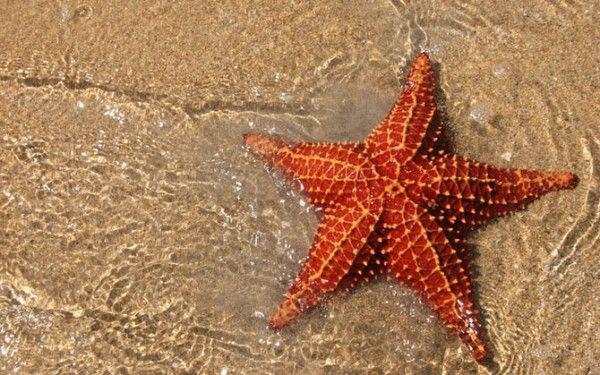
similar to alien invaders, Starfish is a nightmare with sharp needles covered with skin. Usually starfish reach 33 cm in diameter and have five rays extending from the body, which are covered with razor-sharp, spines that protect them from most predators. The stars themselves eat coral polyps.
Sea stars have become a problem in their home ecosystem in relation to environmental changes. Thanks to an insatiable appetite, and rapid multiplication, each star in the "herd" can consume up to six m2 of coral reef per year, consuming massive portions.
Scientists believe that too rapid increase in the number of sea stars is caused by man provoked changes in the ocean ecosystem, due primarily to the increased content of nutrient pollution. As a result, in some areas of the program have been implemented to destroy the starfish with lethal toxins.
2. The European starling

Starlings were introduced to North America by settlers, nostalgic, apparently under the influence of Shakespeare, which is one of the plays of Eugene Sheffelina described the hero, the self-styled messiah who called everyone who left their homeland to a foreign country to conduct a bird. 60 starlings do so were taken to America, however, much later, and released into the wild in Central Park in Manhattan.
Starlings quickly spread across the continent from Alaska to Central America: they invaded the city and the fields, destroyed crops and partially or completely exterminated many native birds, including woodpeckers, tits and swallows.
Flocks of starlings threaten planes - one killed 62 people due to the fact that the engine airliner sucked starling. Despite the large-scale programs to combat them, the number of European starlings in North America currently accounts for approximately 150 million individuals.
3. Giant Canada Goose

Although Canada does not have a bird serving as a symbol of the country, the vast majority of wildlife enthusiasts attributed to the role Canada Goose, as birds of this species in Canada, more than all the others. Nevertheless, Canada - the country is large enough to have room in it several subspecies Branta different habitats and way of life.
Canadian Geese are the originators of the gradual destruction of the shoreline along the mouth of the Gulf of Georgia. This area is of great importance, since many species here stop migratory birds, in addition, is the main habitat of salmon - fishing fish endangered.
Neil K. Dawe, who studies wildlife, conducted field research aimed at studying the state of the mouth of the Gulf, and published results showing that Geese destroy the natural habitat of many animals and are responsible for violations of the food chain.
4. The dark tiger python

The majority of invasive species are small animals, but the dark tiger pythons - huge and potentially deadly giants. They first appeared in the Everglades National Park (Florida), the world famous marsh area. This monster, introduced by the conquistadors in America - one of the largest snakes in the world, he grows up to five meters long and weighs about 90 kg.
Now the number of snakes in the Everglades up to several thousand individuals, and it is more than their original habitat in South Asia. Giant pythons, have powerful jaws and sharp teeth, threatening to destroy the ecosystem of the wetland region as quickly destroy native species, including the usually impregnable American alligators.
Public authorities consider the destruction of Nature Protection of snakes in this region a priority, but to date, all the measures taken have been ineffective.
5. Aga (cane toad)
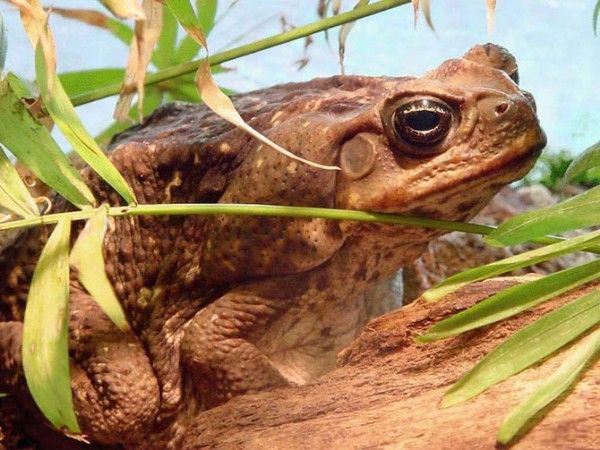
Yeah, or cane toad is living proof that the introduction of invasive species to the second to control a number of existing invader could lead to even worse disasters. A huge toxic amphibian (some individuals can weigh about two kilograms and grow to 23 cm in length), a native of Central and South America was brought to the islands to reduce the number of beetles feeding on sugar cane plantations.
Instead, to destroy the beetles and leave it at that, AGI bred on the vast territory, citing local fauna in decline. They hunt, including predatory lizards, marsupials, mammals and songbirds, and even ruining the egg-laying marine crocodiles, cannibals.
As is the case with other invasive species, the number of cane toads remain artificially high in the new conditions in the absence of predators can eat them and are resistant to toxins.
The proposal to reduce the population of frogs by a virus raised fears - in the long term the measure could cause a chain reaction and cause irreparable damage to the local fauna. By coincidence, a natural toxin toads currently used to kill tadpoles.
6. The brown tree snake
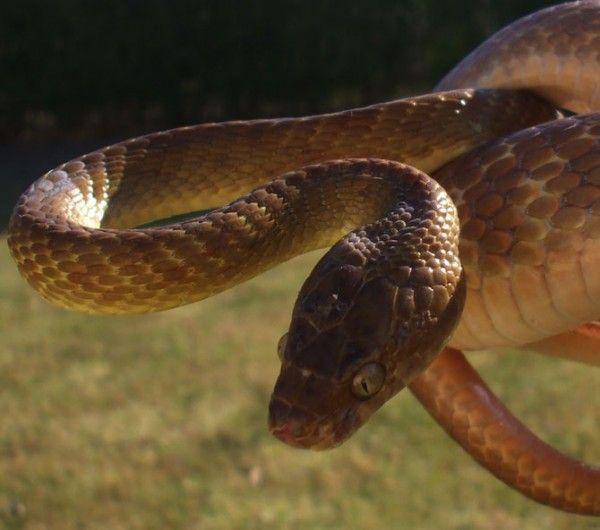
If it turns out the predatory invasive species on the island, the local species, as a rule, does not have the ability to cope with the threat, which had never before encountered. Coupled with the lack of predators higher up the food chain, it can cause the disappearance of native species.
When brown tree snake arrived at the island of Guam after World War II, probably as stowaways in cargo holds of ships that caused the largest environmental disaster caused by the introduction.
Poisonous snakes destroyed most vertebrates, originally living in the forests of the island, they also bite humans, and their bites are very painful. In addition, boiga caused frequent interruptions of electricity, since invaded human settlements.
In the secure environment boiga grow to three meters in length in an unnaturally large amount of food. To control the number of reptiles used the introduction of toxins in dead mice that snakes like to eat.
7. Plague rats and mice
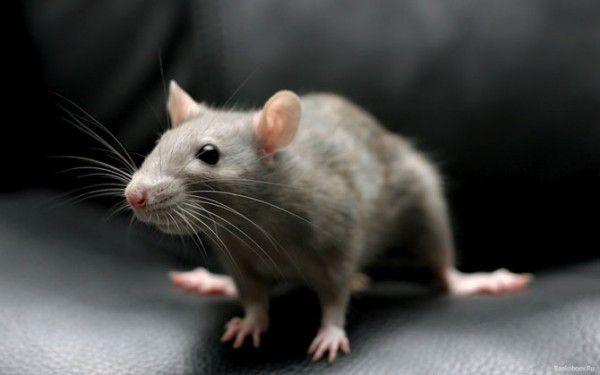
The ships cross the oceans are not only people, but also their mortal enemies - rats and mice. Sometimes the disease-carrying rodents becoming a death sentence for the entire population of seabirds when planted together with the people on the beach: they eat the eggs and young, and sometimes even adult petrels, puffins and other wetland birds, unable to protect their nests from land-based predators .
The presence of invasive rats contributes to the global extinction of marine birds such as rats consume up to 25 thousand petrel chicks per year. No less dangerous invasive domestic mouse, harming species, and so endangered, such as albatrosses tristanskim: mouse not only ruin their clutches, but also eat chicks alive.
8. Domestic cat
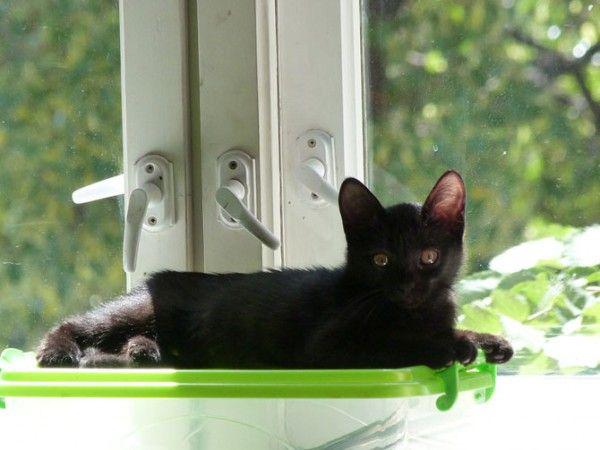
Cats are considered to be the second man's best friends, but they also have a reputation as the most dangerous invasive predators as intensively destroy local wildlife when they are in a foreign environment. Through direct and indirect human assistance stray cats have caused the deaths of millions of continental songbirds, poorly adapted to reflect the growing number of attacks hidden predators.
The catastrophic consequences of the presence of bears cats on the islands known an unprecedented case, when the cat one person has caused extinction of a species of bird in New Zealand - Stefan bush wren.
On many islands and continents invasive cats have caused population declines of birds and small mammals. But there is a downside: some scientists believe that cats can help people in controlling populations of small predators such as rats.
9. cynomolgus
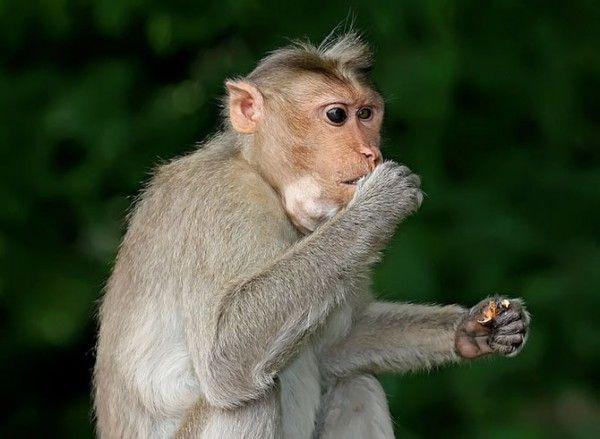
Most often, the main invasive species on the planet ecologists call people, but we rarely present in the role of monkeys. However, cynomolgus include the World Conservation Union's list of 100 most dangerous invasive species. Cynomolgus monkeys - a carnivorous primates invaded a number of islands in an unnatural environment for them with the assistance of a man.
Like many terrestrial predators, cynomolgus monkeys, which have, in addition, the rudiments of intelligence, threaten breeding tropical birds and, according to some experts, may be responsible for the rapid extinction of already endangered species.
Macaques can also be dangerous for people, because they are carriers of the deadly strain of the herpes virus: herpes simplex symptoms resemble, but without proper treatment lead to brain damage and death.
10. Cow trupial
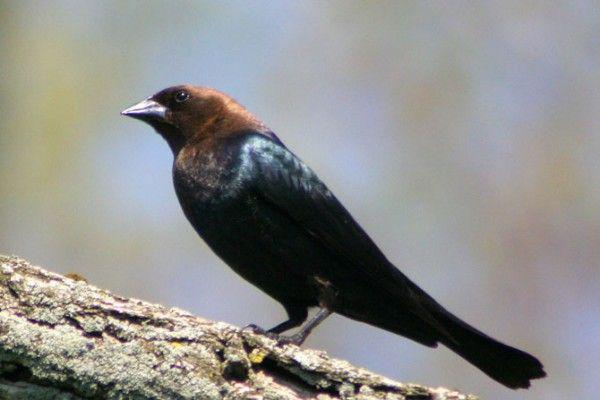
Invasive species can prevent people from effectively use land resources and provide other types, local, additional conditions to hunt their victims, or, as in the case of cow trupialami to parasitism on foreign nests.
Initially trupialy cow lived on the plains of North America, where side by side with buffaloes and eat curly around these large herbivorous insects. However, the increase was a buffalo herd discourage birds build nests and offspring to grow - then cow trupialy began to throw their eggs in the nests of other birds, because of what their own chicks of these species may not develop normally.
In addition, the reduction of forest habitat in some areas trupialov led to their distribution to thousands of km2 of forests where they have caused the downsizing of forest songbirds, whose own chicks have been doomed to starvation.
However, conservationists are sometimes called cow trupialov naturally invasive species, because their homeland was the same area where they live now, they had to do not deliver. However, cow trupialam even managed to reduce the number of rare drevesnits Kirtland.
1. Starfish

similar to alien invaders, Starfish is a nightmare with sharp needles covered with skin. Usually starfish reach 33 cm in diameter and have five rays extending from the body, which are covered with razor-sharp, spines that protect them from most predators. The stars themselves eat coral polyps.
Sea stars have become a problem in their home ecosystem in relation to environmental changes. Thanks to an insatiable appetite, and rapid multiplication, each star in the "herd" can consume up to six m2 of coral reef per year, consuming massive portions.
Scientists believe that too rapid increase in the number of sea stars is caused by man provoked changes in the ocean ecosystem, due primarily to the increased content of nutrient pollution. As a result, in some areas of the program have been implemented to destroy the starfish with lethal toxins.
2. The European starling

Starlings were introduced to North America by settlers, nostalgic, apparently under the influence of Shakespeare, which is one of the plays of Eugene Sheffelina described the hero, the self-styled messiah who called everyone who left their homeland to a foreign country to conduct a bird. 60 starlings do so were taken to America, however, much later, and released into the wild in Central Park in Manhattan.
Starlings quickly spread across the continent from Alaska to Central America: they invaded the city and the fields, destroyed crops and partially or completely exterminated many native birds, including woodpeckers, tits and swallows.
Flocks of starlings threaten planes - one killed 62 people due to the fact that the engine airliner sucked starling. Despite the large-scale programs to combat them, the number of European starlings in North America currently accounts for approximately 150 million individuals.
3. Giant Canada Goose

Although Canada does not have a bird serving as a symbol of the country, the vast majority of wildlife enthusiasts attributed to the role Canada Goose, as birds of this species in Canada, more than all the others. Nevertheless, Canada - the country is large enough to have room in it several subspecies Branta different habitats and way of life.
Canadian Geese are the originators of the gradual destruction of the shoreline along the mouth of the Gulf of Georgia. This area is of great importance, since many species here stop migratory birds, in addition, is the main habitat of salmon - fishing fish endangered.
Neil K. Dawe, who studies wildlife, conducted field research aimed at studying the state of the mouth of the Gulf, and published results showing that Geese destroy the natural habitat of many animals and are responsible for violations of the food chain.
4. The dark tiger python

The majority of invasive species are small animals, but the dark tiger pythons - huge and potentially deadly giants. They first appeared in the Everglades National Park (Florida), the world famous marsh area. This monster, introduced by the conquistadors in America - one of the largest snakes in the world, he grows up to five meters long and weighs about 90 kg.
Now the number of snakes in the Everglades up to several thousand individuals, and it is more than their original habitat in South Asia. Giant pythons, have powerful jaws and sharp teeth, threatening to destroy the ecosystem of the wetland region as quickly destroy native species, including the usually impregnable American alligators.
Public authorities consider the destruction of Nature Protection of snakes in this region a priority, but to date, all the measures taken have been ineffective.
5. Aga (cane toad)

Yeah, or cane toad is living proof that the introduction of invasive species to the second to control a number of existing invader could lead to even worse disasters. A huge toxic amphibian (some individuals can weigh about two kilograms and grow to 23 cm in length), a native of Central and South America was brought to the islands to reduce the number of beetles feeding on sugar cane plantations.
Instead, to destroy the beetles and leave it at that, AGI bred on the vast territory, citing local fauna in decline. They hunt, including predatory lizards, marsupials, mammals and songbirds, and even ruining the egg-laying marine crocodiles, cannibals.
As is the case with other invasive species, the number of cane toads remain artificially high in the new conditions in the absence of predators can eat them and are resistant to toxins.
The proposal to reduce the population of frogs by a virus raised fears - in the long term the measure could cause a chain reaction and cause irreparable damage to the local fauna. By coincidence, a natural toxin toads currently used to kill tadpoles.
6. The brown tree snake

If it turns out the predatory invasive species on the island, the local species, as a rule, does not have the ability to cope with the threat, which had never before encountered. Coupled with the lack of predators higher up the food chain, it can cause the disappearance of native species.
When brown tree snake arrived at the island of Guam after World War II, probably as stowaways in cargo holds of ships that caused the largest environmental disaster caused by the introduction.
Poisonous snakes destroyed most vertebrates, originally living in the forests of the island, they also bite humans, and their bites are very painful. In addition, boiga caused frequent interruptions of electricity, since invaded human settlements.
In the secure environment boiga grow to three meters in length in an unnaturally large amount of food. To control the number of reptiles used the introduction of toxins in dead mice that snakes like to eat.
7. Plague rats and mice

The ships cross the oceans are not only people, but also their mortal enemies - rats and mice. Sometimes the disease-carrying rodents becoming a death sentence for the entire population of seabirds when planted together with the people on the beach: they eat the eggs and young, and sometimes even adult petrels, puffins and other wetland birds, unable to protect their nests from land-based predators .
The presence of invasive rats contributes to the global extinction of marine birds such as rats consume up to 25 thousand petrel chicks per year. No less dangerous invasive domestic mouse, harming species, and so endangered, such as albatrosses tristanskim: mouse not only ruin their clutches, but also eat chicks alive.
8. Domestic cat

Cats are considered to be the second man's best friends, but they also have a reputation as the most dangerous invasive predators as intensively destroy local wildlife when they are in a foreign environment. Through direct and indirect human assistance stray cats have caused the deaths of millions of continental songbirds, poorly adapted to reflect the growing number of attacks hidden predators.
The catastrophic consequences of the presence of bears cats on the islands known an unprecedented case, when the cat one person has caused extinction of a species of bird in New Zealand - Stefan bush wren.
On many islands and continents invasive cats have caused population declines of birds and small mammals. But there is a downside: some scientists believe that cats can help people in controlling populations of small predators such as rats.
9. cynomolgus

Most often, the main invasive species on the planet ecologists call people, but we rarely present in the role of monkeys. However, cynomolgus include the World Conservation Union's list of 100 most dangerous invasive species. Cynomolgus monkeys - a carnivorous primates invaded a number of islands in an unnatural environment for them with the assistance of a man.
Like many terrestrial predators, cynomolgus monkeys, which have, in addition, the rudiments of intelligence, threaten breeding tropical birds and, according to some experts, may be responsible for the rapid extinction of already endangered species.
Macaques can also be dangerous for people, because they are carriers of the deadly strain of the herpes virus: herpes simplex symptoms resemble, but without proper treatment lead to brain damage and death.
10. Cow trupial

Invasive species can prevent people from effectively use land resources and provide other types, local, additional conditions to hunt their victims, or, as in the case of cow trupialami to parasitism on foreign nests.
Initially trupialy cow lived on the plains of North America, where side by side with buffaloes and eat curly around these large herbivorous insects. However, the increase was a buffalo herd discourage birds build nests and offspring to grow - then cow trupialy began to throw their eggs in the nests of other birds, because of what their own chicks of these species may not develop normally.
In addition, the reduction of forest habitat in some areas trupialov led to their distribution to thousands of km2 of forests where they have caused the downsizing of forest songbirds, whose own chicks have been doomed to starvation.
However, conservationists are sometimes called cow trupialov naturally invasive species, because their homeland was the same area where they live now, they had to do not deliver. However, cow trupialam even managed to reduce the number of rare drevesnits Kirtland.
Tags
See also
Anatomical museum
Animals that kill people (19 photos)
Stories of friendship between animals (17 photos)
15 animals, which have played an important role in the history of mankind (26 photos)
Gargoyles (25 photos)
Unbelievable inhabitants of the deep sea (25 photos)
The most vivid memories of female veterans of the war (34 photos)
Women at War (23 photos)
Piranhas (15 photos)
Sexual rituals of animals (9 photos)

















